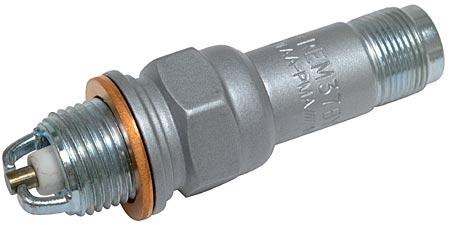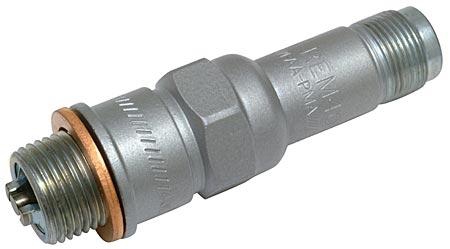How do you know when it’s time to change them? Went to fly the last day we had decent weather (almost two weeks ago ) and the right mag ran rough so I canceled the flight. Pulled the lower plugs tonight and found a little buildup. Cleaned the plugs with a wire brush, and noticed a couple of lead deposits below the tines, but wasn’t sure how to clean it out. Did what I could, replaced and did a runup. The engine ran rough for a minute but cleared up after a couple run ups. I think the problem is solved but I still want my A&P to take a look. Anyway, the plugs did look fairly old and I was wondering how you know when it’s time to just change them out?
To get any idea of the health of a plug, you need some equipment. The typical shop uses a spark plug cleaner/tester that blasts the deposits out of the cavity. Hardened deposits might require some picking or a special probe on a vibratory electric engraver. You have to be careful picking in there, as any side loading on the ceramic can crack it, not only failing the plug but putting ceramic bits into the cylinder. They're really hard and can do lots of damage. The tester part of the machine puts the plug under air pressure and sends a calibrated voltage through the plug to see how much pressure it will withstand before the spark goes out. Failure of the internal resistor is the usual cause of early spark failure. And you also need a small device to reduce the plug gap, a gauge to get it set right, and another gauge to see how far the electrodes are eroded.
See all the stuff in this manual:
http://www.championaerospace.com/wp-content/uploads/2015/06/AV6-R-Aug20141.pdf
Most plugs look like this:
If your engine is approved for them, you should use these:

The first type has a deep well that fills with deposits that end up shorting the electrodes, killing the spark. The second has extended electrodes that are really resistant to that problem, and I install them whenever possible. My experience is that they also do a better, more consistent job of ignition since the spark is farther out in the air/fuel mix instead of back near that plug well where there might be some burned gases still hiding out. I prefer the Tempest over the Champion, too. Champ has long had resistor failure problems, and they finally changed the design to the integral molded-in resistor a year or two ago, but there is still some old stock out there. Look into the deep plug lead well (outer end of the plug) and see if the silver contact in the bottom has a slot in it like a screw head. If it does, it's the old design. Tempest always used the molded-in resistor, as did Auburn, who made the best plugs ever until 10 or 12 years ago when Champion bought them up and shut them down.
Find your engine here:
http://www.tempestplus.com/portals/0/pdfs/tempestappguidev3-07-01-13.pdf
The UREM37BY is the one you want if the engine can take it. Champion's number is REM37BY. The extended electrodes don't fit in some engines because the piston comes too close.


